God is in the detail…

The grand finale in the series of the webinars as part of the Dance India Asia Pacific 202 was Nataraja & the Cosmos by the vivacious, versatile, and knowledgeable V R Devika. In her world, when things unfold, they tumble out like stories that draw you in, and allow you to imagine, and experience the story itself. Starting off her lecture with a personal story of how she first became familiar with the world of dance, and that of Shiva, and to the world of Nataraja and Chidambaram, Devika began by acknowledging the many people who have been a part of helping her nurture her innate curiosity and interest as a “non-performing dancer” in all things to do with art, astrology, mythology, history, and culture. Her foray into Chidambaram and the fascinating world that temple encompasses began by dancing in the thousand pilar hall, with her gurus, The Dhananjayans. “I still remember it rained that evening and there was a beautiful sheet of water between the artistes’ performing and the audience sitting,” she said, “And from thereon, Nataraja for me became a passion of sorts; of course, I must say that I was first introduced to his world by the very knowledgeable Dr Nagaswami who has the ability of transforming everyone with the kind of passion he has for Nataraja.” Devika’s lecture allowed audiences a glimpse into the very layered world of Nataraja, a world that is a coming together of science and imagination. Taking us through a series of slides, and images, interspersed with stories, she spoke of the many aspects of Shiva, the formless, the nirguna, the lingam, and of course the Nataraja, Devika’s lecture was filled with facts, and interesting pieces of trivia that surround them. It isn’t a matter of coincidence that Devika’s lecture coincided on a very auspicious day — considered to be an occurrence once every 400 years where all the planets, the time-keeping tools of the universe, are supposed to be in their own respective grahams (homes) — and the lecture attempted to celebrate the innate connection between the Nataraja and the cosmos, at large. Amongst the many stories that Devika shared was one of a handsome king who had 27 wives and spent a little time with each of them, daily. Unfortunately, his 26 wives felt he was particularly partial to one of them, Rohini and spent a little more time with her. Following a complaint to their father who cursed the king and later went to amend the curse, the king grew in size a little by little every day to appear in his full form once every 15 days and disappear little by little thereafter, only to appear again. “Of course we know this as the waxing and the waning of the moon but what’s interesting about this story is that Rohini, the star in the constellation of Taurus is considered to be many light years closer to the earth and in reality, the moon, while moving around the earth actually spends a little loner time with Rohini. Now isn’t it amazing how they made up a story like this?” Devika’s lecture brought to fore the unique relationship of the gods we worship to the cosmos and talked of the “inter-mingling of science and imagination” in making them as fascinating as they are, ensuring dancers and scholars continue to engage with it, attempting to unravel layer fact and fiction, one after another. Spending time on the Nataraja itself, she also highlighted the fantastic art and iconography that it has come to be; how it incorporates the five elements, the way the hair stands horizontally, making us wonder how Shiva in this form is dynamic although static, and still even while seeming in the middle of a movement. What’s equally fascinating is how the Nataraja itself has been chiselled to detail by one sculptor after another and how artistic liberties have lead to so many similar but unique versions of the Nataraja. Like god is in the detail. Befittingly, the lecture ended with a performance by Gayatri Sachithanandar of Apsaras Arts on the famous Natanam Aadinaar by Gopalakrishna Bharathi. This song refers to the story of Agastya, Tillai in Chidambaram and the Sollukattu swaras in it, make this dance energizing, interesting and beautiful. It is a celebration of Shiva, the cosmic dancer, who balances creation and destruction.
Travel Diary
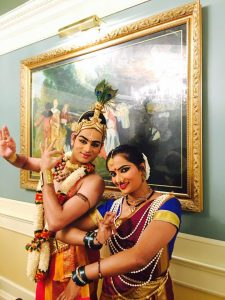
Dance for the Royalty By Seema Hari Kumar “It is not very often that you get to perform before royalty and, that being a piece that brings to life the artwork of their ancestor, makes it more than just a ceremonial treat! This is exactly how I would sum up my experience of having performed at the inaugural Ladies’ International Symposium organised by the All-Malaysia Malayalee Association (AMMA) in Kuala Lumpur in August 2016.” It is always exciting to get an invitation to perform in Malaysia because despite being the closest neighbour, the number of times a Singapore-based dance company like us performs there, are fewer than several other countries on the map. So when this invitation came to Apsaras Arts, I was really happy to be selected as part of the very small cast that was going. I recall Aravinth anna reading out the invitation and their request for us to feature segments from our production entitled “Heroines of Raja Ravi Varma” which first premiered at the Esplanade Theatres on the Bay in 2012. Its naissance was vividly etched in my mind – there were countless meetings in which Aravinth anna would bring the paintings of Raja Ravi Varma to show Maami and she would excitedly put on her reading glasses to scrutinise every detail of accessory, hairdo, makeup and fabric that the painted heroine adorned to make notes for requisition. Perhaps it was the care that both of them took to breathe live to these timeless works of art, through the music and carefully picked lyrics right up to the costuming detail, that made this a popular request by several organisers in the years that followed. We re-staged segments from this production subsequently on different occasions but what struck me was the nature of these invitations. It could not have been pure coincidence that all the prosceniums that presented the “Heroines of Raja Ravi Varma” espoused class and were for an audience that were steeped in art appreciation. Fast forward to this event in 2016, it bore semblance to these occasions in which the production was re-presented. This time it was even more special because we were to perform the highlights of the “Heroines of Raja Ravi Varma” before Her Royal Highness, Princess of Travancore, Kerala, Princess Aswathy Thirunal Gowri Lakshmi Bayi who was presiding the Ladies International Symposium. This was reason enough for me to leave my then 2-yr-old Deeksha home for the first time since her birth, on this two-night getaway to don my role as “Radha” in the production! The decision went unregretted because we had the opportunity to meet the princess up close on the day we arrived, where we had the great privilege of having lunch with her. We watched her quizzing Aravinth anna on the conceptual journey of how her grandfather’s works were brought to life through music and dance. Her unassuming personality and grounded nature were extremely humbling. I went back to the hotel room dreamily getting ready for that evening’s showcase and as the curtains went up, seeing the Princess Gowri amma in the first row first gave me a jolt of anxiety. As the performance progressed, I couldn’t help notice how her eyes lit up in appreciation when I struck the pose that her grandfather had so beautifully brushed into a painting. And just like a fairy tale, we had a happy ending to that event each one of us wistfully looking forward to the next special moment that the hero behind these beautiful heroines would bring us!
Interview
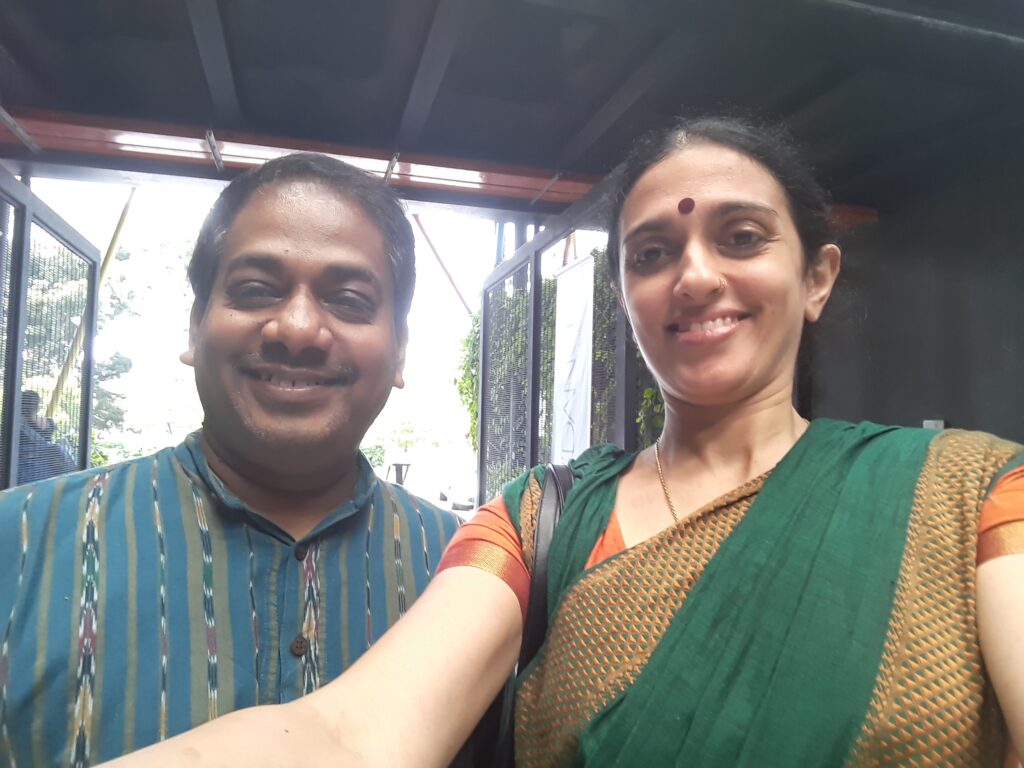
About childhood memories, lockdown reflections and questions on Bharatnatyam? A tete-tete with Anjana Anand By Vidhya Nair “It was simple. They were proud that a student from Singapore was studying at Kalakshetra, their alma matter. They spent an hour with me, walking around the campus. We went to various classes, they introduced me to others they knew in Kalakshetra. I’ll never forget Mami’s “Hi da, how are you?” She had tremendous warmth, a largess of heart which touched me,” says, Anjana Anand in this tete-tete with her childhood friend, Vidhya Nair.When we reach life’s mid-point, it’s important to look back, ponder, reflect and move forward. Anjana Anand is one such artiste who often revisits and reconfigures as she navigates through life. We first met as Malayali teenagers in Singapore, engaged in girl-talk and school banter so this conversation was a meaningful stock-take of how growing up with dance and becoming a dancer came to be. We met up over Zoom and this is how it all transpired. VN:Where are you really from, Anjana? AA: Ha-ha! The most daunting question I’m often asked! I was born in Mysore, my parents are Malayali, although I never lived in Kerala, then we moved to New York, then Singapore when I was 12 (PSLE year!) and I studied at both a local school and United World College (UWC) for 2 years and then to Kalakshetra. So, lots of unconventional moves. In the early years, I have fond memories in Mysore with my grandmother. In New York, my elder sister (Anuradha) and I were placed in a Greek orthodox convent so by the time we came to Singapore, we both spoke Greek fluently yet, we still able to adapt to a new environment. VN: How did dance get introduced? AA: First in New York with Mallika Parthasarathy. It was very informal, in basements of apartments on Sunday. One of my earliest memories was learning “Kamalalochana” (Meera Bhajan). These were gatherings of young mothers who amidst bringing pot-lucked food, engaged their children in these cultural corners while braving snow and ice. Kudos to my mother and her perseverance! For me, proper dance training began in Singapore at SIFAS. The formalised structured learning with Uma Rao initially and then with Shanta Ponnudurai. I recall that all my time outside school was at SIFAS. It was like a Gurukul. Those rickety steps at the Balestier Road campus! I loved my time there. It was a real grounding which also opened up my exposure to music through the visiting artistes we encountered there. By the 9th standard, I had decided to go to Kalakshetra. My parents were hugely supportive. My father being a doctor, was keen that we should not pursue medicine. He felt the arts is the best place to feel fulfilled and they were a huge encouragement. My sister too learned the mridangam and my mother having learned the Veena and lived as a part-time student at Kalakshetra, all this made these decisions uncomplicated for me. VN: What were your earliest memories of dance classes?AA: In New York, I loved the family environment, aunties in the background making food. At SIFAS, it was the timing, systematic syllabus, the well-dressed saree-clad teachers, it used to hold us in awe. The rigour of the class, methodical way of learning, treated in all seriousness. There was no opportunity to be bored with the discipline. VN: I can so relate to that. Tell me, how did you come to encounter Apsaras Arts and its people? AA: I first met Aravinth (Kumarasamy) in Chennai in 2010. He has since become a true friend and guide. We had initially connected through FB and met after a program at Krishna Gana Sabha. I had known of him in Singapore but never personally. Even Neela Mami, I knew of her in Singapore but there was no interaction. My earliest memory of her was in my 2nd year at Kalakshetra when I was suddenly called to the office because I had overseas visitors. It turned out to be Neela Mami and Satyalingam Mama. They were the sweetest. I was taken aback why they wanted to see me. I had been a SIFAS student, they are Apsaras, why had they come to see me? It was simple. They were proud that a student from Singapore was studying at Kalakshetra, their alma matter. They spent an hour with me, walking around the campus. We went to various classes, they introduced me to others they knew in Kalakshetra. They were shooting for their own show at Kalakshetra. I’ll never forget Mami’s “Hi da, how are you?” She had tremendous warmth, a largess of heart which touched me. When I came later to Apsaras Arts later, I reconnected and enjoyed her mentorship in the work I did in Singapore. Aravinth in our first meeting, offered and invited me to be the Guest Choreographer for his new production, “Nirmanika.” At this time, I had completed my Masters in Dance at Bharathidasan University (she had earlier completed her B.A in Music from Madras University) and I was mostly a solo performer. To take up the challenge of group choreography, it was a major breakthrough. I enjoyed working with him and the team at Apsaras Arts. The approach was systematic and a tremendous learning experience for me. The faith that Aravinth had in me to first chose and recognise me is still unforgettable. I was thoroughly impressed with the group of dancers I worked with. I had by then left Singapore for a decade. To see these working adults attending rehearsals straight after their day jobs and staying to practice up to 11pm nightly and then return to their job the next day astounded me. To see this level of commitment with part-time dancers was amazing to observe. In Chennai, you only saw this with fulltime dancers. VN: In your career, what are some of the significant dance performances you have been a part of? AA: There have been several significant performances that has made a difference in my life and introduced
Digital Performances

On the Virtual Stage On the virtual stage of Apsaras Arts, we are excited to have premiered a series of new works in the month of September. Starting with the Dance India Asia Pacific inauguration at Singapore, a collaborative presentation of three classical dance styles, Kanna Va was released, in quest of the divine love of Lord Krishna. Natya lahari was premiered by Raga online series by Esplanade Theatres on the Bay in collaboration with Apsaras Arts, featuring 14 Singapore dancers across the industry, presenting six choreographies by DIAP faculty members. In remembrance of legendary M S Subbulakshmi on her birth anniversary, “Geetham Madhuram” a digital dance presentation by Apsaras arts Dance Company was premiered. We are humbled by the encouraging support we have received from our viewers of all these new digital presentations through likes, comments and shares. On September 4th, at the Dance India Asia pacific inauguration, IndianRaga Singapore in partnership with Apsaras Arts premiered a collaborative dance video “Kanna Va.” “Kanna Va” depicts three searches with one quest for the divine love of Kanna (Krishna). A nayika who pines for another meeting with her beloved Krishna. A nayika who yearns just to get a glimpse of Him. A nayika who relives His embrace. Just as their experiences differ, so do their forms. Featuring three dancers presenting the styles of Bharathanatyam, Kathak and Odissi, Kanna Va showcases the seamless co-existence of solo abhinaya experiences in an ensemble setting. Notice how the three dancers do not have any interaction with each other yet have a common connection through their love for Krishna individually. The seamless use of a common ensemble space while showing the individual styles and expressions is a delight to watch. What makes this performance even more special is the soulful rendition of a Tamil song as the supporting music for all three dance forms – truly bringing to life the message that dance and music are beyond boundaries! Credits: Creative Director & Choreography: Mohanapriyan Thavarajah Original Music composition: Madurai R Muralidharan Singer: G Srikanth Performed by Apsaras Arts Dance faculty members: Bhartnatyam- Seema Hari Kumar Kathak- Shivangi Dake Robert Odissi- Soumee De On September 11th, Dance India Asia pacific in collaboration with Esplanade theatres on the Bay, Raga online series, premiered NATYA LAHARI, a dance presentation that showcased selected choreographies learnt at the master classes held over the years during Dance India Asia Pacific (DIAP) programme. Performed by Singapore dancers, it included three Indian classical styles such as Bharatanatyam, Kathak and Odissi, which have held regular workshops at DIAP since 2012. The choreographies featured in NATYA LAHARI were creative works by DIAP faculty members Shreejith Kirshna, Priyadarshini Govind, Rama Vaidhyanathan, Bragha Bessell (Bharatanatyam), Vaishali Trivedi and Birju Maharaj (Kathak) and Ratikant Mohapatra (Odissi). The online showcase commences with a Ganesh Vandana followed by the Kathak dance Sargam and Thevara Thirattu in Bharatanatyam. Following this Ardhanareesawara Ashtakam is presented in Bharatanatyam, subsequently a pure dance item called Pallavi delivered in the Odissi tradition, Javali in Bharatanatyam before the showcase concludes with a pure dance item called Thillana, in the Bharatantaym style Click Here.On September 15th, IndianRaga Singapore in partnership with Apsaras Arts Dance Company premiered a new work as a tribute to the legend M S Subbulakshmi on her birth anniversary (September 16). “Geetham Madhuram” is a dance presentation that brings to life 2 musical masterpieces popularised by MS Subbulakshmi – Madhurashtakam and Kurai Onrum Illai. Madhurashtakam expresses the qualities and deeds of Lord Krishna which have been described to be as sweet as nectar. The dancers dazzle as Gopis with their interpretations of Lord Krishna and bring out the experience of Madhura Bhakti (the Divine Love). The Gopis subsequently dance to the beautiful Kurai Onrum Illai melody blending into the Madhurashtakam piece. As beautifully depicted by the dancers, this segment highlights how in the divine grace of the Lord and his benevolence, there is nothing more to ask for! Immerse completely in the devotion depicted by the Gopis who also represents the relentless pursuit of the Atman to be one with the Paramaatman. Artistic Director: Aravinth Kumarasamy Choreography: Mohanapriyan Thavarajah Music composition: Dr Rajkumar Bharathi Singer: Savita Narasimhan Performed by Ashmita Prakash Kshirja Govind Nikita Menon Maanasa Sri Ganesh
Dance India Asia Pacific 2020
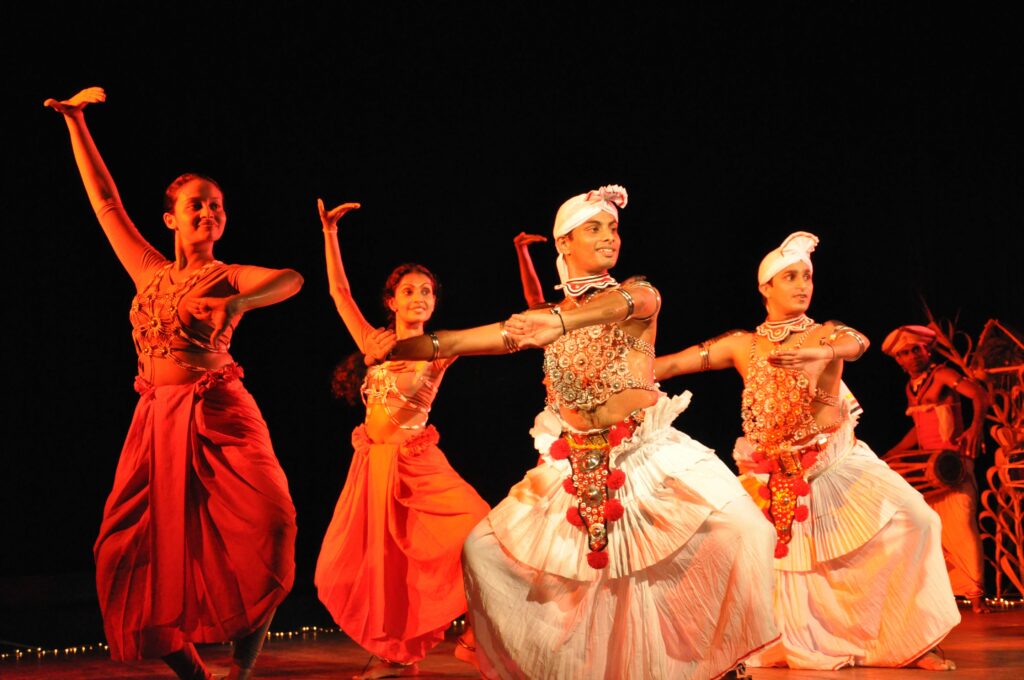
Special Feature “Dance India Asia Pacific 2020 has been a special experience for the organisers, faculty and participants in making it happen in the new normal braving the current pandemic precautionary measures. We are proud to have successfully completed Fourteen (14) Master Classes, Twelve (12) Webinar sessions, Six (6) choreographies during the DIAP Showcase performance, Three (3) DIAP Residency programs, Two (2) DIAP Highlight Conversations, , One (1) Panel Discussion, One (1) Kids Dance Workshop, One (1) Fringe Event, One (1) Special Choreography for the inauguration of DIAP, and One (1) SPOTLIGHT talk series, across Ten (10) days between 4th to 13th September 2020. We are pleased to have introduced Indian classical music master classes and music lecture demonstration sessions this year on this 9th edition of DIAP. Our gratitude to all the faculty and participants, who have made DIAP2020 a grand success!” says, Mr Aravinth Kumarasamy, Curator and Convenor, Dance India Asia Pacific and Artistic Director, Apsaras Arts Singapore. Dance India Asia Pacific has been a visionary annual industry development initiative on Indian classical dance education for students, teachers and performers at Singapore and Asia Pacific countries. Since its inception in 2011, Dance India Asia Pacific has expanded it’s curricula to offer master classes in several genres namely Bharatnatyam, Kathak, Odissi dance forms. Dance India Asia Pacific 2020 was conceived as a hybrid blended program with physical classroom and online sessions, in alignment to COVID-19 health advisory guidelines and observance of social distancing safety measures. DIAP 2020 also introduced Music master-class training based on popular demand. Dance India Asia Pacific 2020 was organised by Apsaras Arts and supported by National Arts Council and Esplanade Theatres on the Bay. DIAP2020 was inaugurated on 4th of September 2020 with the video messages from Dr Padma Subrahmanyam (Dancer, Scholar, Choreographer, Advisor for Apsaras Arts), Rosa Daniel (CEO, National Arts Council), Alok Nayak (CEO and Artistic Director, Milapfest UK), Yvonne Tham (CEO, The Esplanade Co. Ltd), Priyadarsini Govind (Dancer, Choreographer, DIAP Faculty since 2012), Rama Vaidyanathan (Dancer, Choreographer, DIAP Faculty since 2015), Malavika Sarukkai (Dancer, Choreographer, Speaker DIAP Webinar 2020), Aditi Mangaldas (Dancer, Choreographer, Fcaulty DIAP2020), and Sriram Emani (CEO and Founder, IndianRaga). We thank them for enabling DIAP2020 begin with a positive note. This was followed by the premier of our new work “Kanna Va” performed by Shivangi Dake Roberts, Seema Hari Kumar and Soumee De and choreographed by Mohanapriyan Thavarajah. On conclusion of a successful learning journey over 10 days, we would like to thank our faculty members for their unparalleled support and adaptability during the workshops, namely: Music faculty: Dr S Sowmya, Sikkil Gurucharan, Patri Sathish Kumar and Dr Sridhar Vasudevan. Master class Dance faculty : Priyadarsini Govind, Rama Vaidhyanathan, Bragha Bessell, Mohanapriyan Thavarajah, Aditi Mangaldas and Dr Ileana Citaristi, Mohanapriyan Thavarajah and Gayathri and Chachithanandar, faculty of Apsaras Arts for conducting the daily morning warm-up, Adavu and dance therapy session; Soumee De, Apsaras Arts Faculty for conceptualising and conducting the Navarasa for Kids workshop. Apart of the above in-person masterclasses DIAP2020 Webinar sessions ranged over a variety of topics related to Indian Classical Dance and Music in order to gain a holistic multidisciplinary learning through the week. We are pleased to enlist the detailed the write up about each of the webinar content covered by Aalaap Concepts founder, Akhila Krishnamurthy. 4th Sep: What’s Your Voice in Dance with a panel that comprised four young Bharatanatyam dancers — Dakshina Vaidyanthan, Kavya Muralidaran, Manasvini Ramachandran and Mohanapriyan Thavarajah. The conversation was moderated by Aravinth Kumaraswamy, Artistic Director, Apsaras Arts and Akhila Krishnamurthy, Founder, Aalaap.Click here 5 Sep : In Conversation with Alarmel Valli : Poetry in Movement – Click here 5 Sep: Priyadarsini Govind: The Dancing Body – Click here 6 Sep: Swarnamalya Ganesh – Evolution of the Maargam Like a rolling stone: Click here 6 Sep : Malavika Sarukkai – Re-Imagining the Solo Performance The Dance of Life:Click here 7 Sep : Dr S.Sowmya – Veena Dhanammal’s School of Padams The Aha Moment!:Click here 7 Sep: Rama Vaidyanathan – Tumris in Bharatanatyam The Dance of Passion, and vice versa!: Click here 8 Sep : Chitrasena Dance Company – Kandyan Dance Soul of the Soil: Click here 8 Sep: Dr Srilatha Vinod and Anjana Anand – Silapathikaram – Dancer’s delight Stream of Consciousness, Dance of Human Conscience: Click here 9 Sep : Dr Ileana Citaristi – Sancharis in Odissi between the lines: Click here 9 Sep : Aditi Mangaldas – Re-Imagining dance during lockdown. Dance of/in the now: Click here 10 Sep : GyanDev Singh – Light Design for Bharatanatyam. In the light of: Click here 10 Sep : Sujatha Vijayraghavan – Appreciation of Music and Poetry for Bharatanatyam Of words and Beyond: Click here 12 Sep: Lalgudi GJR Krishnan and Vijayalakshmi – Lalgudi Thillanas Dance of Music, Music of dance: Click here 13 Sep : Dr V.R Devika – Nataraja and the Cosmos – Special SPOTLIGHT Series God is in the detail: Click here DIAP2020 would not have been possible without the commitment and handwork by Team Apsaras Arts : Vidhya Nair, Vijaya Nadesan, Mohanapriyan Thavarajah, Sankari Elavalahan, Seema Hari Kumar, Periaychi Roshni, Soo Mei Fei and the support from Bethanie Xavier. The team had to work extra hard to ensure we keep the master classes safe and adhere to the COVID19 health advisory guidelines. Special thanks to Akhila Krishnamurthy from Aalaap Chennai for penning the daily reviews. Our heartfelt gratitude to our collaborators, Esplanade Theatres on the Bay for their continuous support and collaboration for DIAP since 2012, and for presenting the first ever digital performance of “Natya Lahari” – DIAP Showcase as part of their Raga series, featuring Singapore local artistes. We thank Mudra Cultural Society Singapore for their collaboration this year to present Chakkayar Koothu with artistes from Kerala. A big thank you to Aalaap Concepts, Chennai, for promoting DIAP2020 amongst young dancers in India and covering the webinars in depth and also to to Sruti Magazine, India and Focus Malayalam Singapore for the publicity for DIAP2020. Gratitude to our sponsors and supporters from stART Fund, Temasek Foundation, Arts Fund and Lee Foundation and to National Arts Council of Singapore for their support and guidance. Last but not the least, our heartfelt thanks to Dr Prashant Nayak from Milapfest UK, who envisioned Dance India in Liverpool almost two decades ago and for the continued support from Alok Nayak and Archana Sashtri of Milapfest, UK for being with us on this journey for the past nine
The Tour to Sri Lanka, which meant so much for Neila Mami
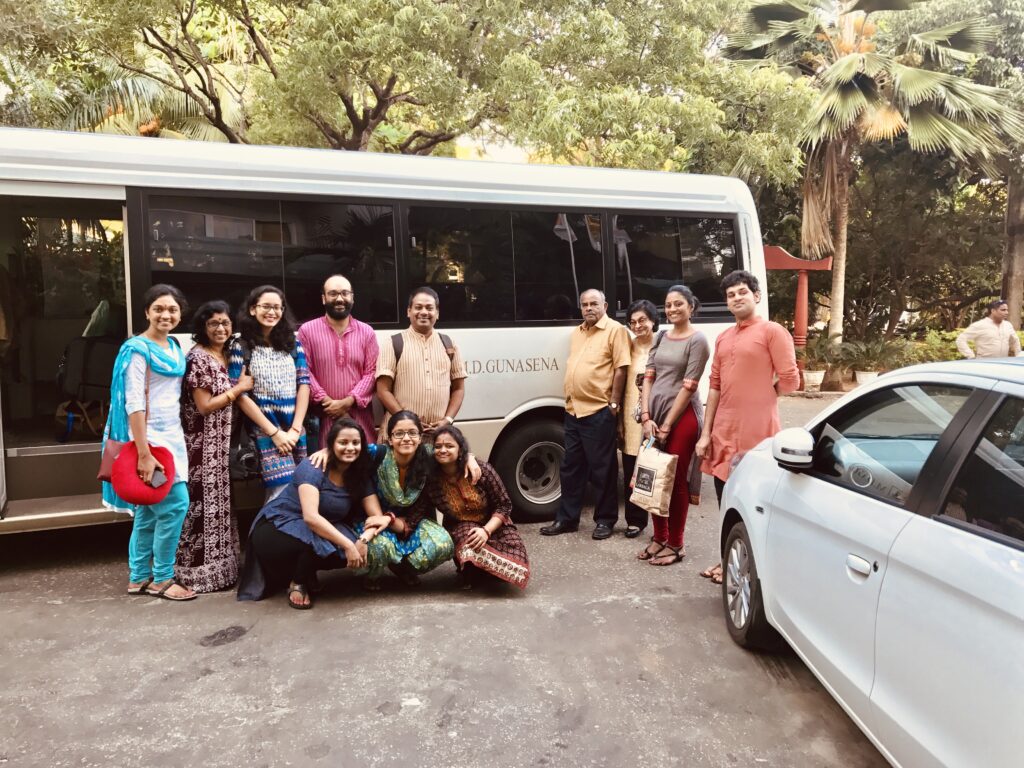
By Yashvini Raveendra “All of the dancers and the rest of the team made a vow. A vow to make Neila Maami proud and show people the talents that has been produced by Apsaras Arts. We do know for a fact that even though Neila Maami has left us, her legacy will never end. We will keep fighting for what she started and keep the spark of dance alive, ‘ says Yash Raveendran as he reminisces his memorable travel tour to Sri Lanka. I was a blessed child to have grown up under the guidance of both Sathyalingam Mama and Neila Maami. I first started as Mama’s student, learning Carnatic music from the tender age of 5 and it was truly a sweet memory. I would remember frolicking into their house in Potong Pasir with my pink princess bag – the bag that Mama thought was bigger than me. I would then sit down on the carpet and lay down while he sang to his heart’s content and that’s when Neila Maami will come downstairs and laugh at our “singing” classes – which was just him singing and me playing around. And he would always argue back saying that I was always listening to him and from that, I would pick it up and become a great singer. Neila Maami was such a beautiful woman, inside and out. She always made for me all kinds of food and made sure that whenever I came over, I’d have a plate of food. And we both shared a love for modakam, especially the ones made by the Ceylon Road Temple – Sri Senpaga Vinayagar Temple. She’d always make sure I had one or she’d pack it up and send it to me through my mother. She held me, fed me and took care of me like I was her own grandchild. She truly gave me a memorable childhood and a family that I can never part with. But most importantly, she showed me a beautiful art form that has impacted my life in so many ways. Neila Maami had also taught me life lessons and skills through this art form and her passion for Bharathanatyam has always inspired me. She was a person a lot of people aspired to be – a strong-willed woman with such elegance, intelligence and a smile that could light up a person’s day. Our Sri Lanka tour meant the world to Neila Maami. Going back to her’s and Mama’s hometown brought immense joy to her. She told us to not come back, no matter what happened. She was upset that she could not join us but nonetheless, she showered her blessings upon us before our first show at Nelum Pokunar Theatre. One of the dancers even mentioned how calming it was to hear Neila Maami’s voice and it immediately washed away all their fears. And to sidetrack a little, Neila Maami always had that effect. She knew the right words to say and her voice always brought ease to others. When the news broke, we were a wreck. It was hard to digest the fact that our guru has left us but we picked ourselves up and pushed on to give everyone a fantastic performance and showcase the talent we had in Apsaras. The talent Neila Maami nurtured and produced. People were impressed and I was amazed by the amount of passion and dedication our dancers had put into the performance. The dancers performed at Jaffna Hindu College, one of the most famous colleges in Jaffna. The stage was beautiful, not very big but just sufficient for the production. Even the lighting was amazing and it helped bring out the magic of Alapadma. Alapadma showcased the different Hindu mythologies in a more contemporary style. There was beautiful chemistry between the dancers and everyone looked simply stunning on stage. The energy was really great and the dancers gave their very best and all their hard work really paid off. I felt so mesmerised and so at ease while I was watching them. It made my heart squeeze in joy as I knew Neila Maami was watching them from above and she was certainly very proud of the amount of hard work, passion and dedication they had put into Alapadma. All of the dancers and the rest of the team made a vow. A vow to make Neila Maami proud and show people the talents that has been produced by Apsaras Arts. We do know for a fact that even though Neila Maami has left us, her legacy will never end. We will keep fighting for what she started and keep the spark of dance alive.
Talk on “Banteay Srei – the Khmer Jewel” to Friends of the Museums
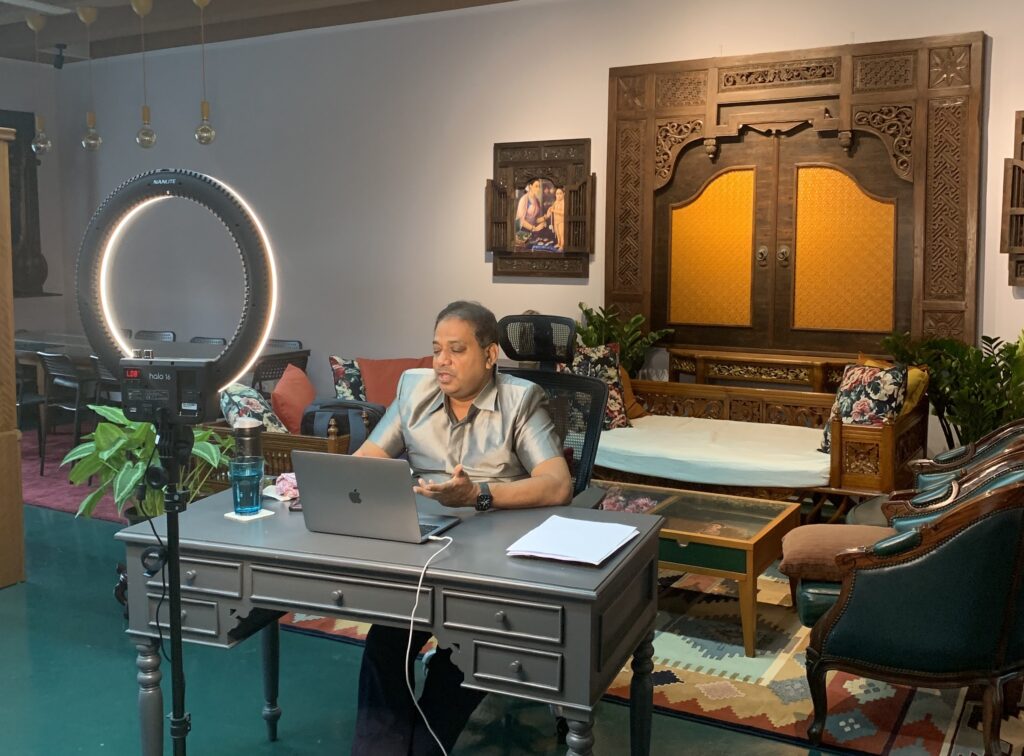
Virtual Events On 4th November 2020, Aravinth Kumarasamy gave an hour-long mesmerising talk on Banteay Srei, the Khmer temple in Siem Reap, Cambodia that inspired Apsaras Arts upcoming production – “Amara – Dancing stories of Banteay Srei” which premieres on Friday 20thNovember 2020 8pm as part of Kalaa Utsavam, Esplanade, Theatres on the Bay’s annual Indian festival of arts. This production will be available digitally till 29th November 2020 1159pm via tickets purchased on SISTIC: Click here In the talk, Aravinth detailed the historical context of this unique temple – Banteay Srei and how it came to be created in the 10th century by the Khmer kingdom. He also drew connections to the many stories carved in the bas reliefs derived from ancient Hindu texts of the Mahabharata, Ramayana and Puranas. He provided his perspective on how these stories have been interpreted within Cambodian society and how French archaeologists rediscovered this temple in the 19th century and its significance among the pantheon of Khmer architecture. He also shared how “Amara” came to be inspired by these carvings, the movements within the architecture and the visual feast of dance performed by the many characters featured including Shiva, Parvati, Ravana, Yoginis, Apsaras and the interpretations intended by the Khmer sculptors. FOM members who are active docents at Singapore museums and enthusiasts of history & heritage engaged in many inquisitive questions. They appreciated Aravinth’s artistic impressions and asked questions on how the sculptures can be conveyed through classical dance. Many spoke of their trips to Siem Reap to see the famed UNESCO heritage site, Angkor Wat but spoke of a much needed revisit revisit in light of this talk to this more obscure but jewelled temple of pink stone. An engaging session that helped bring excitement to the upcoming launch of Amara.
Spotlight Series October 2020
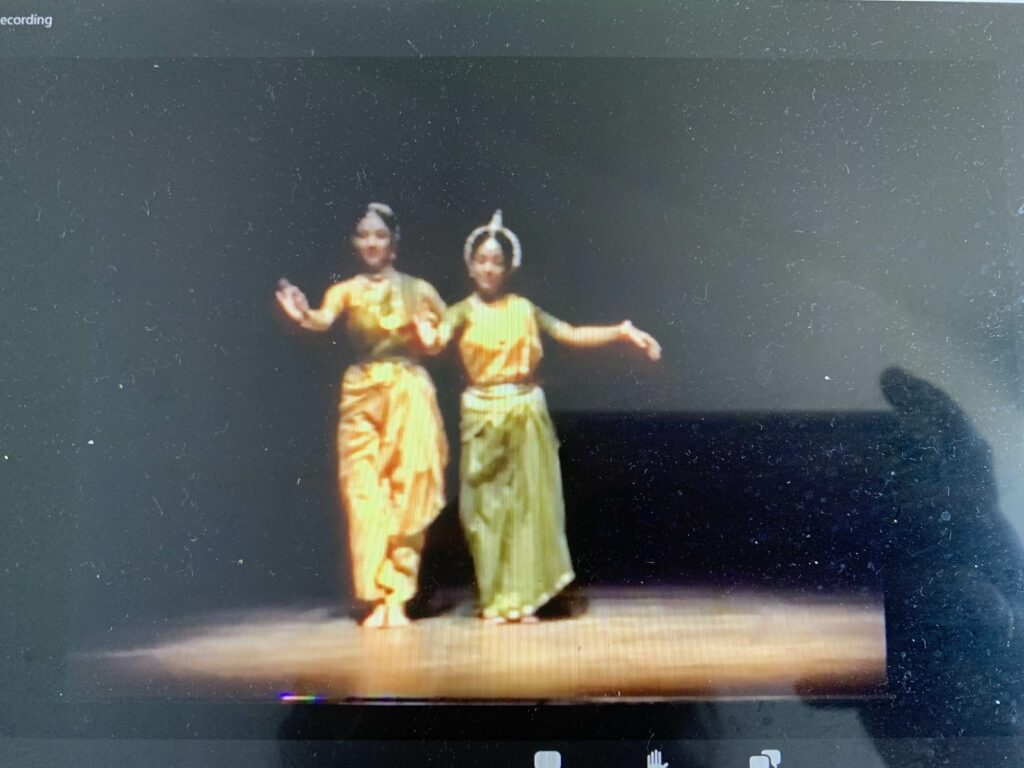
In a session entitled “Art of Collaboration” featuring two stalwarts of classical dance – Leela Samson and Madhavi Mudgal, they shared their early interactions in pioneering efforts in the genre of collaborative dance performances. This conversation was guided by Aravinth Kumarasamy who engaged them in an effortless dialogue of memories of their craft and long-held friendship and common goals in their dance journey. They both shared that they first came together in a TV series, where as they performed their dance form’s footwork, a realisation that a common ground could be found. They began work with certain Ragas which helped them explore a collaborative dance. Both reminisced of the fun times they had in 1975-76 in Delhi and Raag Hindolam & Raag Malkauns which opened up these possibilities. Leela akka shared that when collaborating, it was important to find similarities within the natural form of the artform which brings harmony yet allows for appreciation of the differences. She called their collaborative work – a “confluence” of ideas. Madhavi didi spoke about “Sanskriti” – a togetherness where the exploration was not a competition of ideas yet on reflection, this kind of jugalbhandhi had not been done before them. They also spoke about the importance of creating silences within a performance and the importance of staying true to ones’ own dance form and working on finding compatibility. Much credit to their early collaborations was given to Madhup Mudgal (brother of Madhavi didi), acclaimed Hindustani vocalist, who helped them with his compositions especially in the use of Thumris & Khayal and gave them latitude to explore the concept of Abhinaya in Thumri. Madhavi didi spoke of the difficulties of collaboration in the 1970s when they were very much on their own – no funding, handling all aspects of production & negotiating both the creativity and the practical aspects of a show. She noted the tremendous support from vocalist, O S Arun and his willingness to try new ideas. She credits the fact that as young artistes then, their openness to experiment and exploration helped. Reminiscing, Madhavi didi shared the challenges in finding space, the lack of resources for set design & finding affordable yet compatible sarees. Leela akka went on to explain how the “Bols” were negotiated in their collaboration – the precision needed and “journeying into the others’ space.” She emphasised the need to make effort to learn about the other dancer along with the artform without being judgemental and giving mutual respect to both the person and the style. Madhavi didi spoke about the influence of their Gurus who were alive then to critique their collaboration and she explained that their creative process embedded the inputs of musicians – e.g. Shubha Mughal (her niece), a young vocalist then would perform a Thumri in Khayal-style and they would let the singers sing and as choreographers they would listen, imbibe and then create their steps . They both emphasised the importance of retaining the essence of the genre of the music. Another important aspect of choreography included the need to be sensitive to the audience watching as they would need to watch two dancers at the same time, thus many considerations would need to be evaluated when developing a duet. Leela akka put it astutely when she said, “There is no need to make it a “drama” – a duet is not a tennis match. The dancers should come very close yet not be merged together.” In the Q&A segment, there were many questions from dance students. Both artistes shared some key wisdom. They spoke of the importance of lessons in learning of the artform – as students, much is copied yet to become a serious dancer, the need to get deeper into each item happens when working on a collaboration. This kind of initiative helps a dancer realise how much you don’t know and the influence you can have on the other and the long-standing impressions that get created. They advised that in a collaboration, the compatibility of dancers is important. A willingness to compromise, to find a third area of “movement vocabulary” that speaks to each other. The dancer’s attitude towards the other should be based on a mutual understanding, not to be pressurised to do something & to give the collaborative experience – time to flourish. Dancers should have a thirst and quest to work with others. An overarching message from both the artistes is that our Indian dance traditions have certain structures which need to be respected and there is much to create within it. Over 80 participants were present at this engaging and inspiring session.
AMARA – Making the Impossible Possible
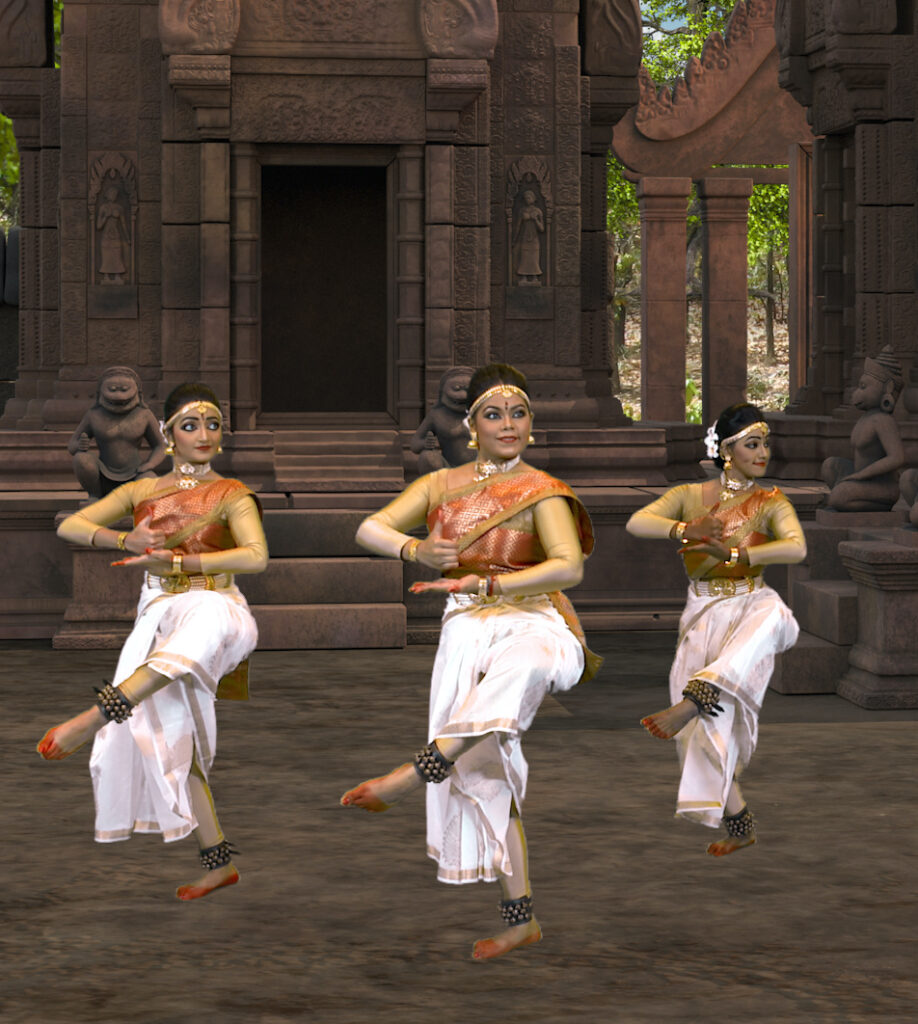
Special Feature by Mohanapriyan Thavarajah “From the forest of his matted locks, water flows and wets his neck, on which hangs the divine snake like a garland, and his drum incessantly plays damat, damat, damat, damat.” Thus, Shiva is engaged in a very vigorous Tandava dance, to bless and shower, prosperity on the entire universe. That day in the flowing water, I saw Shiva’s Lingas dance. My approach to the choreography is to portray the emotions that brim through these carvings at the Banteay Srei temple and bring them to live. In this production, the Yoginis will take us through the temple with dancing stories and the audience will be transported to the temple itself. As we are looking forward to the premiere of Amara on 20th November, it served as an opportunity for me to share my experience of the creation of this production. During this unprecedented times of Covid-19, the making of Amara was not an easy task. To keep our spirits up in this new normal, we took baby steps with Sita: the first digital production of Apsaras Arts. This work enlightened us with possibilities to think outside the box. Amara is an hour-long production which convinced us to adopt the 3D green chrome technology meaningfully. My vivid memories of trips to Cambodia are still so fresh in my mind. Everything I saw there has deeply affected my thoughts and has served as an inspiration. The artistry of the Khmers is simply astonishing, I know their architecture is irreplaceable with any other creations of mankind but what awed me is their reimagination and interpretations of the concepts of religion and art. The idea of carving thousands of Lingas in the river bed of Mount Kulin is evidence of their brilliant imagination. They combined nature and religious symbols to create sacred surroundings not only in temples but wherever they could find space for divinity. I still remember touching the Linga in the middle of the flowing river and remembered the Shiva Thandav Strotra lines “From the forest of his matted lock, water flows and wets his neck, on which hangs the divine snake like a garland, and his drum incessantly plays damat, damat, damat, damat.” Thus, Shiva is engaged in a very vigorous Tandava dance, to bless and shower, prosperity on the entire universe.” That day in the flowing water, I saw Shiva’s Lingas dance. Banteay Srei was the first temple that I visited in Cambodia. The soft pink stones of the temple aren’t immediately visually convincing as an architectural building but it resembled a dwelling made of ruby gem stone with cuts of intricate carvings. The details of carvings were similar to my father’s goldsmith works that I have often admired. The presiding deity is Chandrasekhara but interestingly, it is the Yoginis – beautiful female figurines which have been craved and celebrated all around the temple as a gesture of pride to their Matriarchal society of that time. The Hindu gods and goddess have been absorbed into the typical features of Khmer. It is noteworthy that the presiding deities of Angkor temples like Shiva and Vishnu appear majestic in their looks which are in sync with the concepts of king-god synergies. The carvings of the Hindu gods and characters are often studied in the myths but in the Khmer style, these are not static carvings but they are in motion. Their body language and curves are so convincingly realistic and there is clarity in the expressions on their faces. My favourite sculptures are of Ravana lifting Mount Kailash and Mahishasuramardhini. Unlike the Indian version of Ravana with his horizontally aligned ten heads, the Khmers have visualised Ravana’s ten heads to be decked on top of each other like a mountain. This is where the visualisation is illuminating to a choreographer like myself in order to understand the emotions of characters in detail. For example, by seeing Ravana’s heads decked the way, it shows his arrogance and the power he commands in his actions. The sculptors have also created motion with Ravana’s multiple hands lifting the mountain, easily more than 20 hands have been drawn capturing the enormous arm strength of his action. The level of detailed carving continues with Shiva seated calmly while all other divine beings including Parvati holding frightened expressions. In the case of Mahishasuramardhi, she is carved slaying the buffalo headed demon holding on his tail in an upside-down swift movement which shows us the power of goddess who ensures triumph over evil. In truth, stopping at any of these decorated lintels and looking up close at these carvings, one may realise these lively sculptures are breathing softly through the magical stones of Banteay Srei. My approach to the choreography is to portray the emotions that brim through these carvings and bring them to live. In this production, the Yoginis will take us through the temple with dancing stories and the audience will be transported to the temple itself. You will need to watch the production to behold this for yourself. With safety distance measures, the dancers had to deal with many restrictions in the day long shoots. This production is filmed using the green screen chrome technology where perspectives of dancers are changed for the cameras to capture the best of their moves. This was a new approach for us as we had to dynamically adapt ourselves to change, to add something on the spot to meet the expectations of the director, of the visuals planned. The challenge lay in sustaining the stamina and still evoke rasa in repetitive, multiple shots. This experience has been a great learning lesson in the need for patience, focus and determination. Getting the costumes ready for Amara was a hunt in the tunnels. As we knew that we have very limited resources in Singapore and with no travel and courier exchanges between countries – complicated. This journey enabled me to explore Singapore’s textile sector and allowed me to find the closest fabrics similar to Cambodian Ikats and Silks.
The square and the circle of the Indian arts
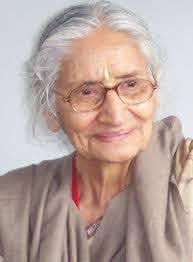
by Kapila Vatsyayan The Square and the Circle of the Indian Arts is a major contribution in Indian art history. More than a book on the theories of arts, it has far-reaching implications for the way one thinks about the future of indology and art history. It provides a model to be emulated for inter-disciplinary research, not only between the arts but also the sciences and the arts.The book begins by re-examining the imagery of the Vedas and the Upanisads, highlighting some aspects of early speculative thought which influenced the enunciation of aesthetic theories, particularly of Bharata in the Natyasastra. The next chapter introduces a new methodology of analyzing the rituals (yajna) as laid down in the Yajurveda and the Satapatha Brahmana, the best way to focus the relationship between the text and the practice. Four chapters follow – one each on drama (natya), architecture (vastu), sculpture (silpa), and music (sangita). Each presents some fundamental concepts of speculative thought, concerned with each of the arts and purposefully correlates these with actual examples both of the past and the present. This second edition remains an event not only because the book benefits from the works published since the first edition, but also because it presents the author’s integral vision and her unique adventure into the boundaries of several disciplines. It demonstrates the efficacy of her earlier approach of investigating the imagery and the metaphors as basic to the discourse of the Indian tradition. She proposes a multi-layered cluster of concepts and metaphors which enable one to decode the complex multi-dimensional character of the Indian Arts. Also significantly she suggests a deeper comprehension of the relevance of the developments in the field of traditional mathematics and biology for the study of the language of form of the Indian Arts. About the Author Kapila Vatsyayan (कपिला वात्स्यायन) (25 December 1928 – 16 September 2020) was a leading scholar of Indian classical dance, art, architecture, and art history. She served as a member of parliament and bureaucrat in India, and also served as the founding director of the Indira Gandhi National Centre for the Arts.In 1970, Vatsyayan received the Sangeet Natak Akademi Fellowship, the highest honour conferred by the Sangeet Natak Akademi, India’s national academy for music, dance and drama; this was followed by the Lalit Kala Akademi Fellowship, the highest honour in the fine arts conferred by Lalit Kala Akademi, India’s national academy for fine arts in 1995. In 2011, the Government of India bestowed upon her the Padma Vibhushan, India’s second highest civilian honour.